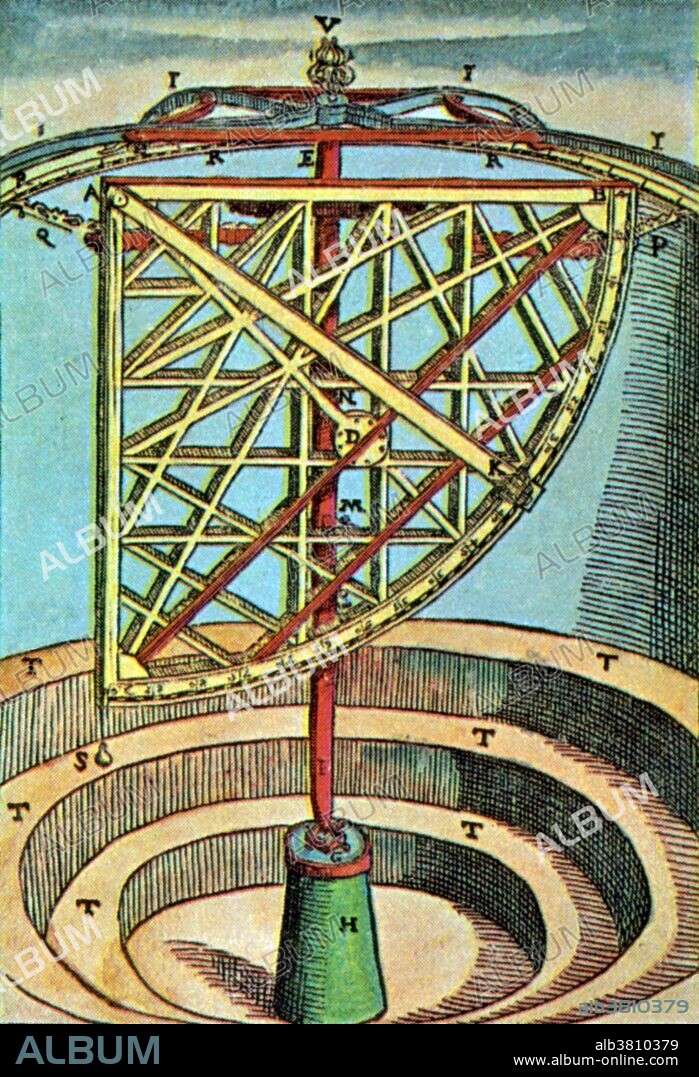alb3810379
Tycho Brahe, Azimuth Quadrant

|
Add to another lightbox |
|
Add to another lightbox |



Buy this image.
Select the use:

Title:
Tycho Brahe, Azimuth Quadrant
Caption:
Brahe's 10-foot azimuth quadrant, accurate to 1/240 of a degree. TTycho Brahe (December 14, 1546 - October 24, 1601) was a Danish astronomer and alchemist. After becoming interested in astronomy as a student in Copenhagen, he realized the difficulty of making accurate measurements of celestial bodies with the instruments of the day. His designs for new methods and devices won him great fame. He was granted an estate on the island of Hven to conduct his research, and funding to build the Uraniborg observatory. As an astronomer he worked to combine the geometrical benefits of the Copernican system with the philosophical benefits of the Ptolemaic system into his own model of the universe, the Tychonic system. He was the last of the major naked eye astronomers. He is credited with the most accurate astronomical observations of his time, and the data was used by his assistant, Johannes Kepler, to derive the laws of planetary motion. No one before him had attempted to make so many planetary observations. Due to a duelling injury at university, he always wore a metal nose prosthetic. In 1601 he contracted a bladder or kidney ailment after attending a banquet and died several days later at the age of 54.
Category:
Astronomy & Space • Science: History
Credit:
Album / Science Source / New York Public Library
Releases:
Image size:
2726 x 3996 px | 31.2 MB
Print size:
23.1 x 33.8 cm | 9.1 x 13.3 in (300 dpi)
Keywords:
ART • ARTWORK • ASTRONOMIA • ASTRONOMICAL • ASTRONOMY & SPACE • ASTRONOMY • ASTRONOMY: OBSERVATORY • AZIMUTH • BRAHE • DANISH • DENMARK • DRAWING • ENGRAVING • HISTORIC • HISTORICAL • HISTORY • ILLUSTRATION • ILLUSTRATIONS • ILUSTRATION • INSTRUMENT • OBSERVATORY • ORRERY • PLANETARIUM • PLANETARY • PRINT • QUADRANT • SCIENCE • SCIENCE: HISTORY • TOOL • TYCHO BRAHE • URANIBORG


 Pinterest
Pinterest Twitter
Twitter Facebook
Facebook Copy link
Copy link Email
Email
